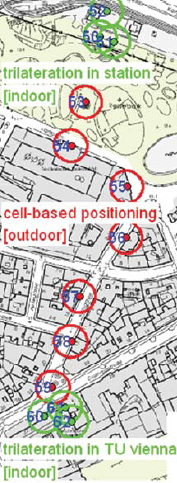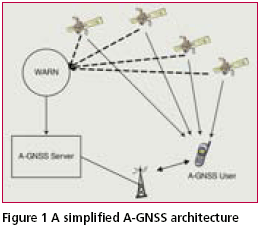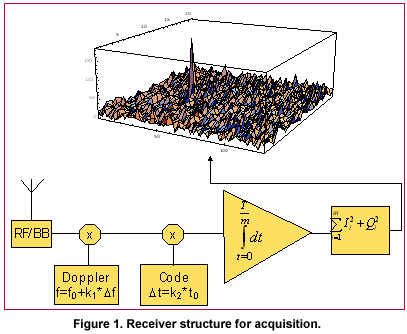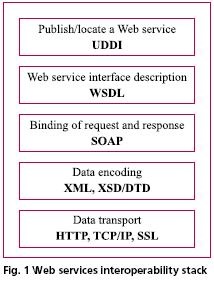Articles in the LBS Category

The LBS market has been segmented into 3 main categories: • B2C: Business to Consumer • B2B2C: Business to Business to Consumer • B2B: Business to Business Details of this segmentation are provided in Figure 2. This segmentation highlights the diversity of services that can be offered by an operator. This diversity of services is also a diversity of business model. The LBS market has been especially Figure 1…

Mobile tools for wayfinding combined with Location Based Services (LBS) can provide pedestrians with practical information concerning optimal routes and useful facilities in their vicinity. However, what is considered as “optimal” and “useful” largely varies between different kinds of individuals. Inappropriate information may hinder effective information extraction for a person seeking specific navigational and environmental information…

Alternative location methods for absolute positioning in areas where no GNSS position determination is possible due to obstruction of the satellite signals are needed in mobile positioning. Active RFID (Radio Frequency Identification) can be used also for position determination, although the system was not only developed for positioning and tracking but mainly for identification of objects. Using RFID in positioning, different approaches can be distinguished, i.e., cell-based positioning if the RFID tags are installed at active landmarks (i.e., known locations) in the surroundings, trilateration if ranges to the RFID tags are deducted from received signal strength (RSS in RFID terms) values and location fingerprinting where the measured signal power levels are used directly to obtain a position fix. Using Cell of Origin (CoO) the achievable positioning accuracy depends on the size of the cell and is therefore usually several metres up to 10’s of metres using long range RFID equipment. Higher positioning accuracies can be obtained using trilateration and fingerprinting. In this paper the use of trilateration is investigated.

Most of today’s Location Based Services (LBS) provide information based solely on a users’ location, not taking into account context knowledge about the user’s current situation and needs. This often results in low-quality and inappropriate information to the user. Hence, in order to provide user-oriented services, an improvement of the response-quality of information requests is required. Knowledge about the coordinates of places where the user regularly stays in her life combined with semantics about such places can provide valuable knowledge for LBS. Zhou et al.

There are many different types of technologies employed in calculating the location of handsets in wireless networks with various levels of success and accuracy. Assisted-GPS (A-GPS) is a positioning technology that is presently used for locating handsets in wireless networks and is gaining traction in the market. An A-GPS server provides assistance data to the handset in order for it to have a low Time to First Fix (TTFF), weak signal acquisition and optimize handset battery use. A-GPS is used as a location technology in isolation or hybridized with other positioning technologies that provide range-like measurements.
They went up a hill to fetch a pail of water. Jack fell down and broke his bone and Jill came tumbling after… And now they need medical attention and must locate a medical center soon. How far is the nearest hospital? How do they get there from the accursed hill? What is their current location? They need location-based services (LBS). “What is LBS?” asks Jill….

THE land-sea interface is one of the most complex areas of management in the world consisting of both the marine and terrestrial environments. The coastal zone is also home to an increasing number of activities, rights and interests. Population along the coastline is continuously increasing, bringing about new pressures on the fragile eco-system of the coastal zone. This has brought with it an increased need to more effectively and efficiently manage this area to meet the economic, environmental and social outcomes of sustainable development.

In particular the comfortable and mobile access to the internet were here the driving factors. Access points can nowadays be found in our daily environment, e.g. in many office buildings, public spaces and in urban areas. Parallel to this development there is meanwhile substantial interest in offering the user information which refers to the current location of the user (so-called Location Based Services LBS). Such Location Based Services, however, will be accepted by the user only if the cost performance ratio is satisfactory. If existing infrastructure such as WiFi without additional hardware installation can be used for location determination, then the realization costs are small and the service can be offered under attractive conditions. Several systems are nowadays available for location determination using WiFi signals. Their major application is the location determination of persons and objects inside buildings.

Location based services (LBS) are a rapidly growing field of wireless data services that can be accessed through a mobile phone equipped with a GNSS receiver. Some of the services are intended for outdoor use while others are suited for use in urban and indoor areas. It is therefore likely that subscribers will expect these services to be available throughout the coverage area of the mobile telephone network…

There are numerous types of GPS receivers in the current international marketplace, ranging from inexpensive, low accuracy handheld devices to expensive, high precision geodetic equipment. By and large, low–cost GPS receivers (whether sold as a plug– in hardware device or as a complete navigation and positioning receiver) have almost assumed mass market status in the consumer electronics industry. Recent advances in micro and wireless technology, reductions in consumer costs, and the apparent growth of the Location Based Services (LBS) industry have somewhat fuelled the need for mobile (information communications and technology) consumers to become “location aware”.










 (5.00 out of 5)
(5.00 out of 5)